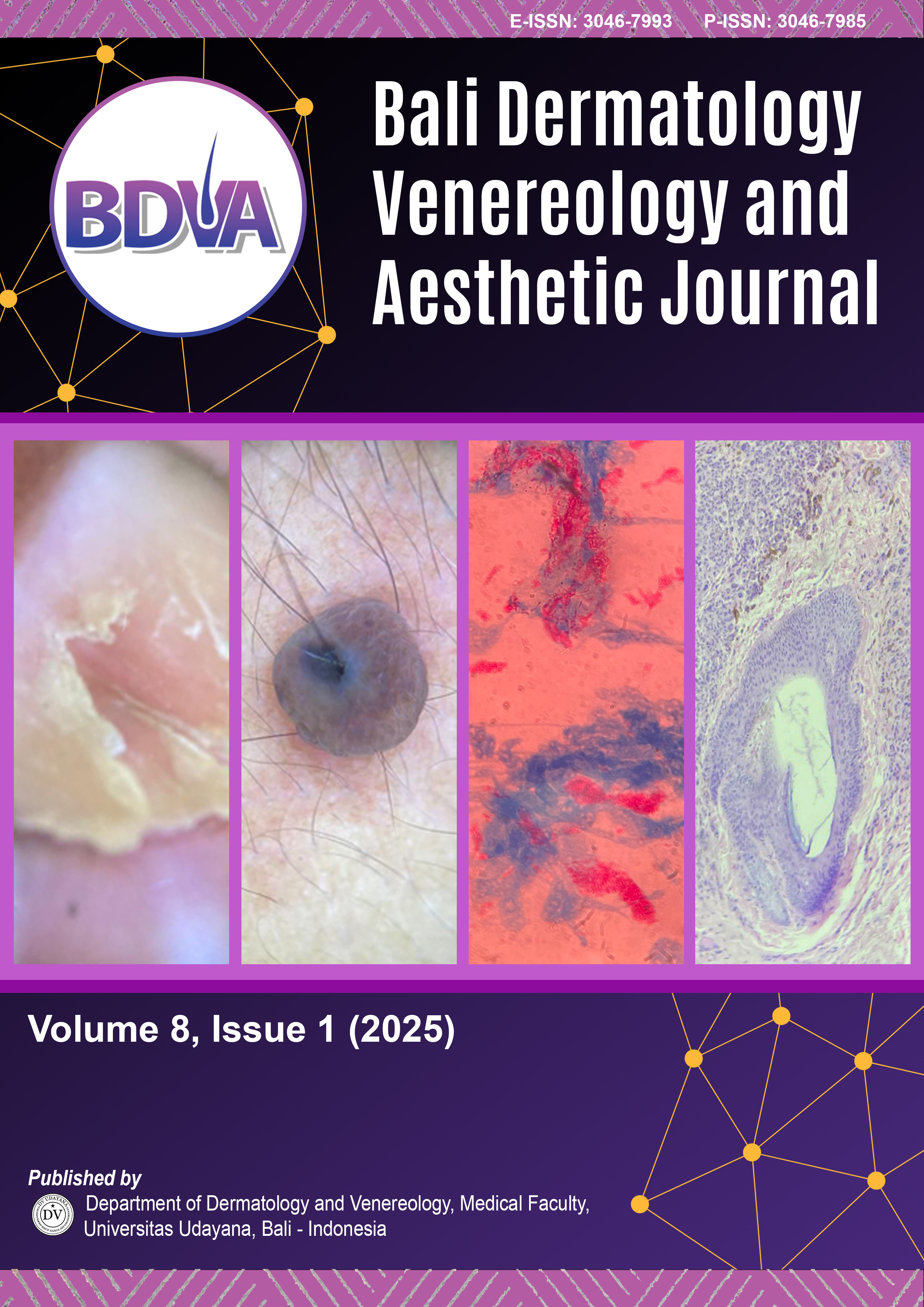A dermatitis possibly due to contact with Cyanophyceae: a case report from a rural area in Indonesia
Main Article Content
Keywords
blue-green algae, Cyanophyceae, dermatitis, east nusa tenggara
Abstract
Background: Diagnosing skin conditions can be challenging in resource-limited settings. Cyanophyceae, or blue-green algae, are found in water bodies worldwide and can lead to harmful algal blooms under specific conditions. East Nusa Tenggara, a province in eastern Indonesia, with its hot, dry climate and pristine waters, creates ideal conditions for these blooms. While dermatitis from Cyanophyceae exposure is rare, the potent biotoxins produced by these algae may cause skin reactions. This case report aimed to describe the dermatitis that was possibly caused by Cyanophyceae.
Case description: A 22-year-old male from rural East Nusa Tenggara presented with pruritic papules, pustules, and vesicles on both arms for two days. The lesions began as erythematous papulo-vesicular formations and progressed to oozing and crusting shortly after he cleaned a neglected fish pond with algal blooms. The eruptions were confined to exposed areas of both arms. The patient reported no fever, cough, headache, or throat pain, and other physical findings were normal. After two weeks, the lesions improved significantly with topical mometasone furoate. The patient was educated on proper hand hygiene and avoiding similar allergens.
Conclusion: Cyanophyceae can release biotoxins that may cause hypersensitivity reactions on human skin. In addition, the lipopolysaccharides found in their cell walls can also irritate human skin. Skin reactions vary and depend on factors such as individual susceptibility, cyanobacterial profile, toxin types and concentrations, and skin barrier disruption. Cyanophyceae can cause irritation and allergic responses.

